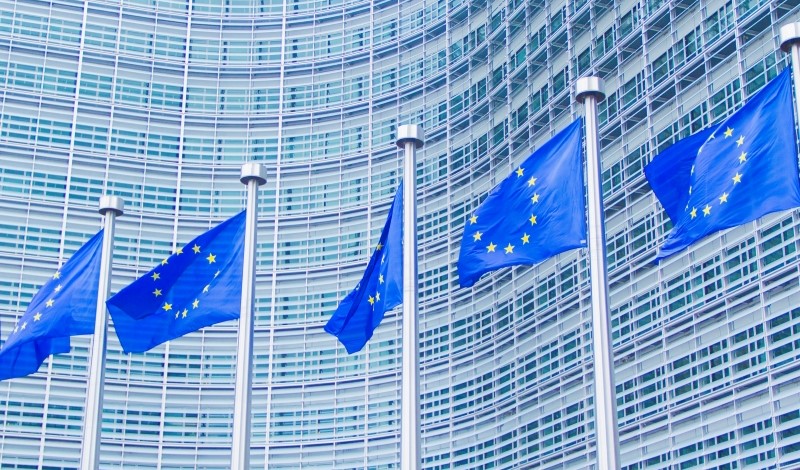
EU member states seek to unify their response to increased asylum seeker arrivals.
After three years of negotiations, the European Union member states reached a preliminary agreement to reform aspects of its migration and asylum system.
The European Commission—the institution that develops EU laws, sets spending priorities, and represents the EU internationally—first proposed the New Pact on Migration and Asylum in September 2020. Through the New Pact, the Commission will attempt to end years of largely ad hoc responses to increased asylum seeker arrivals by individual member states.
The preliminary agreement centers on select reforms proposed in the New Pact. These reforms include developing a biometric database to identify non-EU nationals quickly, establishing uniform border security procedures, instituting rapid asylum screenings at EU borders and facilitating “swift” returns for those without valid asylum claims, and preparing the EU for future migration crises.
The New Pact emerged after the 2015 refugee crisis revealed cracks in the Common European Asylum System, which set EU standards for asylum procedures and rules for determining which member states must process asylum applications. In particular, the crisis exposed flaws in the Dublin Regulation, which requires that asylum seekers have their claims evaluated in the member state of first entry. Consequently, surges in migrant arrivals burdened frontline states such as Italy, Greece, Malta, and Spain disproportionately.
In addition, the EU has paid Albania, Libya, Rwanda, Tunisia, and Turkey, among other countries, to intercept asylum seekers and other migrants passing through their territories to prevent them from reaching the EU. Journalists have found that these third-country agreements not only fail to reduce immigration to Europe, but cause thousands of migrant deaths in the Mediterranean Sea, the Sahara, and the Balkans each year because they force migrants to use more dangerous routes to avoid interception.
To many EU lawmakers, the agreement signals an important breakthrough and a chance for a more coherent migration and asylum system. Although the New Pact could make it easier for member states to reject asylum seekers, some EU lawmakers argue that leaving the negotiations without a deal would have risked jeopardizing Europe’s refugee protection framework.
Many human rights groups and refugee rights advocates, however, have criticized the New Pact. These advocates argue that the New Pact will allow border authorities to use substandard and “fast-tracked” asylum assessment procedures that may violate international law.
Meanwhile, migration experts anticipate that third-country agreements will continue even if the New Pact becomes law. Thus, those lawmakers who oppose the New Pact caution that thousands of asylum seekers will continue to die en route to Europe. Furthermore, refugee rights advocates contend that the EU’s disproportionate focus on border security fails to address the underlying drivers of migration.
In this week’s Saturday Seminar, migration experts evaluate the New Pact and the future of the EU migration and asylum system.
- Europe must adopt operational changes and commit sufficient resources to implement the New Pact before the agreement can alleviate migration pressures, Lucía Salgado and Hanne Beirens of Migration Policy Institute Europe advise in a recent policy brief. Salgado and Beirens argue that digital technologies, such as wallet systems for key documents, exchange platforms, and online case management systems, could help streamline the implementation process and facilitate burden sharing. Salgado and Beirens, however, caution leaders to balance the benefits of such technologies against their potential risks. Salgado and Beirens suggest developing governance frameworks to regulate data protection and ensure sufficient system monitoring, and increase collaboration between digital and migration experts to optimize solutions without creating over-reliance on tech companies.
- In a Journal of Ethnic and Migration Studies article, Nuno Ferreira of the University of Sussex and several coauthors argue that EU policies undermine social integration by keeping migrants in legal limbo. Ferreira and his coauthors contend that Europe will continue facilitating protracted displacement through the New Pact, which prioritizes security over migrant protection. The Ferreira team predicts that the New Pact may reduce asylum seekers’ chances of obtaining refugee protection by introducing greater complexity into the asylum system and tightening windows for challenging eligibility determinations. They also criticize the New Pact for relying on the discredited idea of returning migrants to a safe country of origin.
- The New Pact may restrict asylum seekers’ movements at border or transit zones in ways that amount to unlawful detention, argues Janna Wessels of Vrije Universiteit Amsterdam in an article in the European Journal of Migration and Law. Wessels notes that some border officials incorrectly believe that member states’ international human rights obligations do not extend to asylum seekers who arrive at border zones without a valid visa. She argues instead that once officials begin processing these asylum seekers’ claims and holding them in border zones, member states are required to abide by human rights law. In addition, Wessels suggests that the New Pact fails to consider that EU border management does not necessarily have to involve detention.
- In an article in Chatham House, Anna Iasmi Vallianatou reports that residents of Lesvos, Greece believe that EU policymakers turned the island into a “refugee warehouse.” Vallianatou explains that Lesvos is one of five Aegean islands hosting asylum hotspots that function as buffer zones between Turkey and Europe. She contends that a 2016 deal between the EU and Turkey turned these islands into “open-air prisons” for refugees, who are not permitted to leave for other EU countries. Vallianatou notes that Lesvos has become a testing ground for the EU’s asylum policies and that many practices first implemented on the island—including the containment of asylum seekers in border and transit zones—now appear in the New Pact.
- The New Pact proposes a return sponsorship mechanism that requires collaboration among member states to facilitate the return of migrants without permission to remain in the EU to their home countries, note Olivia Sundberg Diez and Marie De Somer of the European Policy Centre, and Florian Trauner of the Brussels School of Governance, in an article in the European Journal of Migration and Law. Although some EU policymakers hope that this mechanism will boost trust and solidarity among member states, Diez and her coauthors caution that member states reluctant to cooperate on migration issues may still find opportunities to withhold assistance. Furthermore, the Diez team finds that the European Commission lacks targeted incentives, sanctions, or enforcement tools to ensure compliance.
- In a report in MIGNEX, Marie Godin of the University of Oxford and several coauthors describe what they call an “incoherence in European immigration policies.” Godin and her coauthors argue that the meaning of EU migration policy coherence has changed over time. They note that policymakers shifted from viewing migration as part of international development policy to viewing it as a policy priority in itself and relevant to EU stability and security. With the New Pact, the authors contend that migration policy coherence has come to signify efficiency in the EU’s ability to deport or return migrants, rather than any normative alignment with international development goals.
The Saturday Seminar is a weekly feature that aims to put into written form the kind of content that would be conveyed in a live seminar involving regulatory experts. Each week, The Regulatory Review publishes a brief overview of a selected regulatory topic and then distills recent research and scholarly writing on that topic.



